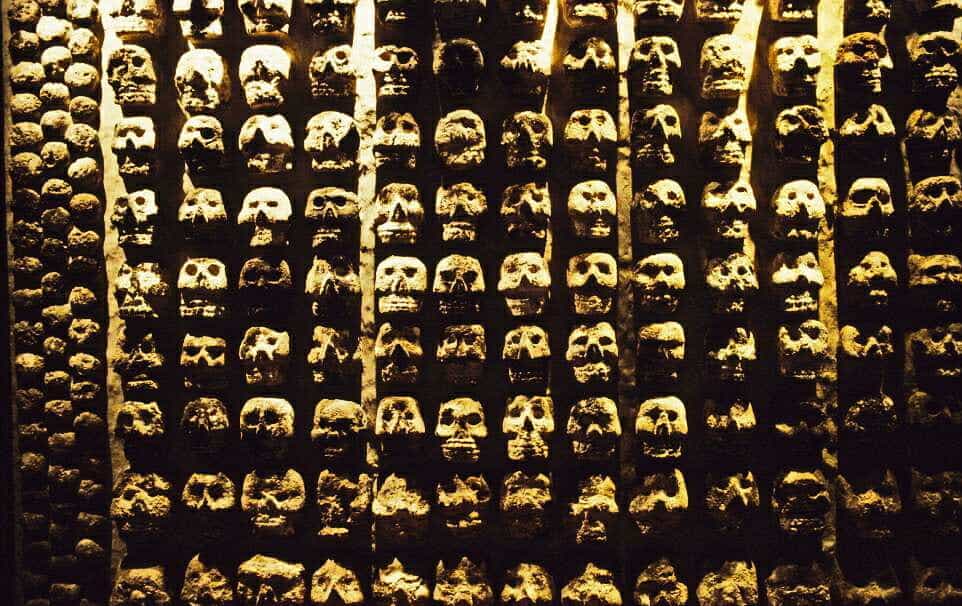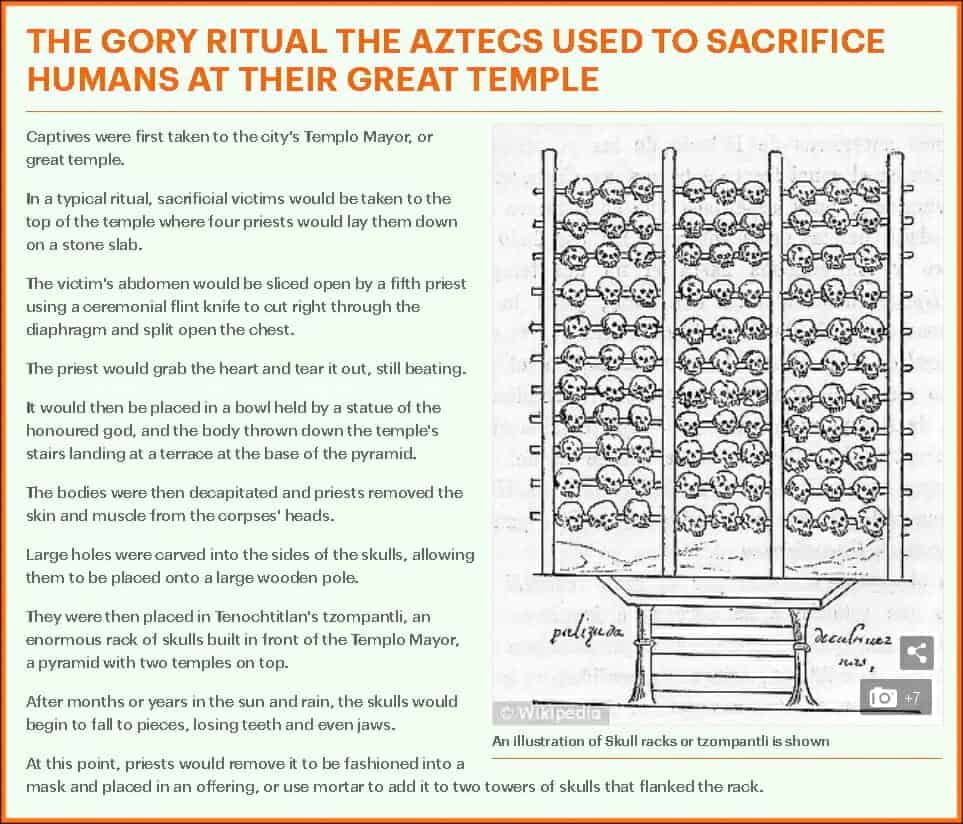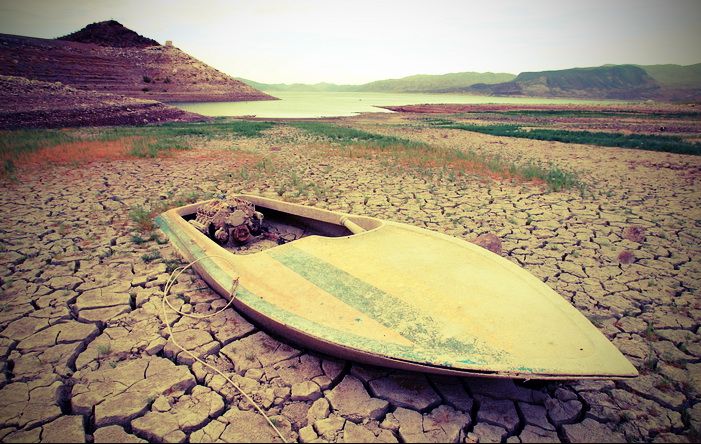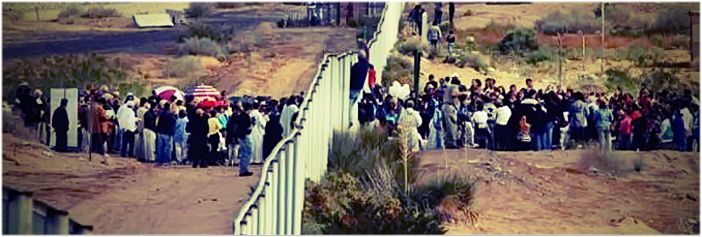For the Hillsdale Dialogue this past Friday, Hugh interviewed Victor Davis Hanson regarding current issues and his new book, “The Case for Trump“. Good interview, will be remembered long after Trump is out.
Victor Davis Hanson

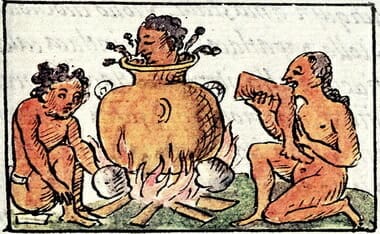
Mayan, Incan and Aztec “Terrorism”
UPDATE!
The DAILY MAIL informs us of the utter devastation of human sacrifice the Aztecs “enjoyed” — and why the cartels are the way they are. They are really a death cult version (Santa Muerte [watch your volume, video starts playing automatically at link]) of this early history:
…In 2015 archaeologists from Mexico’s National Institute of Anthropology and History (INAH) found a gruesome ‘trophy rack’ near the site of the Templo Mayor, one of the main temples in the Aztec capital Tenochtitlan, which later became Mexico City.
Now, they say the find was just the tip of the iceberg, and that the ‘skull tower’ was just a small part of a massive display of skulls known as Huey Tzompantli that was the size of a basketball court.
The new research is slowly uncovering the vast scale of the human sacrifices, performed to honor the gods.
According to the new research detailed in Science, captives were first taken to the city’s Templo Mayor, or great temple, where priests removed their still-beating hearts.
The bodies were then decapitated and priests removed the skin and muscle from the corpses’ heads.
Large holes were carved into the sides of the skulls, allowing them to be placed onto a large wooden pole.
They were then placed in Tenochtitlan’s tzompantli, an enormous rack of skulls built in front of the Templo Mayor, a pyramid with two temples on top.
[….]
Some Spanish conquistadors wrote about the tzompantli and its towers, estimating that the rack alone contained 130,000 skulls.
The skull edifices were mentioned by Andres de Tapia, a Spanish soldier who accompanied Cortes in the 1521 conquest of Mexico..
In his account of the campaign, de Tapia said he counted tens of thousands of skulls at what became known as the Huey Tzompantli….
(CLICK TO ENLARGE)
(The Below Was Posted Oct, 2017)
This is a combining of three previous posts to make it easier for those looking for refutation to the Left’s understanding of Columbus Day. Another resource is this excellent video.
A multicultural approach to the conquest of Mexico usually does not investigate the tragedy of the collision between 16th-century imperial Spain and the Aztec Empire. More often it renders the conquest as melodrama between a mostly noble indigenous people slaughtered by a mostly toxic European Christian culture, acting true to its imperialistic and colonialist traditions and values.
In other words, there is little attention given to Aztec imperialism, colonialism, slavery, human sacrifice, and cannibalism, but rather a great deal of emphasis on Aztec sophisticated time-reckoning, monumental building skills, and social stratification. To explain the miraculous defeat of the huge Mexican empire by a few rag-tag, greedy conquistadors, discussion would not entail the innate savagery of the Aztecs that drove neighboring indigenous tribes to ally themselves with Cortés.
The following conglomeration of responses to two seperate persons in a LONGER VIDEO where some Native-Americans express their “dislike” of Christopher Columbus.
Subjects dealt with are:
- Christopher Columbus being the “first terrorist” on the America’s;
- That land possession was something brought by Westerners;
- or that Columbus “came to America” at all!
- Michael Harner, in his 1977 article The Enigma of Aztec Sacrifice, estimates the number of persons sacrificed in central Mexico in the 15th century as high as 250,000 per year. Fernando de Alva Cortés Ixtlilxochitl, a Mexica descendant and the author of Codex Ixtlilxochitl, estimated that one in five children of the Mexica subjects was killed annually. Victor Davis Hanson argues that a claim by Don Carlos Zumárraga of 20,000 per annum is “more plausible.”…. (Hanson, who accepts the 80,000+ estimate, also notes that it exceeded “the daily murder record at either Auschwitz or Dachau.”) (WIKI)
So the above video show that Christopher Columbus, the Spaniards, nor even Hitler reached the amount of terrorism on people quite like the pre-Colombian indigenous people of the Americas. Here is a small portion from a paper I wrote detailing some of this, followed by an excerpt from a site detailing some of this:
Literature from the Mesoamerica is so very rich and full of the traditions of the people there that it is a welcome challenge to add this flavoring into the classroom. From a historical view Latin literature can be very effective in showing how a culture is influenced over time by another. The Spanish influence on Mesoamerica is still to this day incredibly prevalent; much like the English fingerprint is on North America. The terms should almost be B.S., before Spain, and A.S., after Spain. Norton makes the point in fact that “[m]any of the folktales from Mexico, South and Central America, and southwestern part of the United States reflect a blending of cultures” (Norton et al, 2001, p. 146).
Who could not write of the clash of civilizations represented in the men of Cortez and Montezuma? Unfortunately much of this historical fiction is more fictionalized than history. An exemplary text used to illustrate this in the classroom would be Montezuma’s Daughter by Rider Haggard (1980), originally written in 1894. The myth had already started that the Spaniards were merely there for gold, and killed for it exclusively. While there is a place for literature to express cultural mores and values, even going so far as comforting people away from their homeland, it should still apply to history somewhat. Norton mentions that the “choices of materials to be read and discussed may reflect… moral messages” (Norton, p. 3). Some in the teaching profession can use Latino literature to paint history with broad strokes, thus passing moral messages on to the classroom, guiding, influencing them.
Rarely does one hear in the social studies class, literature class, or history class that Cortez’s small band of men (even with horses) couldn’t have defeated Montezuma’s large army, unless that is, there were defectors. Why would people want to defect from the Aztec culture and join with foreigners? Montezuma had this peculiar habit of taking areas over, grabbing the young men from said area, bringing them back to a temple and while still alive cut their hearts out and throw their bodies down the altar steps (rotten.com, used 4-14-06). This caused many to join the forces of Cortez, making him a more formidable force resulting in forcefully bringing to a halt Aztec pagan sacrifice and setting up Christian icons instead. Incan and Mayan cultures sacrificed humans as well, sometimes 200 children at once.
A lot of this history is bypassed with much of the Mesoamerica literature in the search for national pride and identity. Pride and prejudice is a great conversation to have unfolded by Latino literature, or any of the multicultural writings. Tribal conflicts, territorial rights, or wanting to become a “doctor instead of a bullfighter” are all topics that Western children can relate to, learn essential values from, or see history from a different perspective….
(For references, see my papar, “LATINO LITERATURE“)
The first time I ran into information noting the incredibly evil culture, and how it was ultimately defeated (showing, absolute greed can still have VERY positive aspects to it), was a post on ROTTEN.COM
The funny thing about Montezuma isn’t really that he was a deranged,despotic, cannabilistic, pedophiliac practitioner of human sacrifice with legendary diarrhea.
Well, OK, that is pretty funny. But the really funny thing is how many towns, high schools and rotary clubs are named after the guy. There’s Montezuma, Iowa; Montezuma, Georgia; Montezuma, Kansas; Montezuma, New York; Montezuma Castle National Park in Arizona; Montezuma, Costa Rica; Montezuma, New Mexico… The list goes on and on and on.
What were these people thinking? Do they want you to think their town is full of cannibals? Are they proud of their explosive diarrhea? What was the runner-up name for the town? Hitler, New Mexico? Torquemada? Georgia? De Sade? Kansas?
Montezuma was the emperor of the Aztecs in the 16th century — right about the time that the good times were coming to an end. (Montezuma is the Anglicized version of the Spanish Moctezuma, which is a Spaniardized version of one of those seemingly unpronounceable Aztec names.)
While the coming of the White Man provides a convenient scapegoat for Aztec apologists, the fact is that Montezuma was not a barrel of laughs even before Cortez dropped the Conquistadors in his lap.
Montezuma was a conquering king, who frequently waged war against his neighbors in a pretty successful effort to expand his empire. He kept the gods on his side with a regular regimen of human sacrifice. While the Aztecs had a long history of ritualistic human sacrifice, the art had never known a patron like Montezuma.
At the time, such sacrifices were performed with ritual daggers atop the Aztec pyramids. According to some accounts, Montezuma sacrificed tens of thousands of prisoners at a time, which is a good trick considering each one had to be individually killed.
A 1590 account detailed the procedure: “The usual method of sacrifice was to open the victim’s chest, pull out his heart while he was still alive, and then knock the man down, rolling him down the temple steps, which were awash with blood.” It wasn’t the most efficient procedure. Who knows what Montezuma could have accomplished with a gas chamber, a guillotine, or a submachine gun?
Apparently the gods were appreciative of all this bloodshed, because Montezuma apparently had a pretty good run, annexing several nearby kingdoms and allegedly running a virtual police state with an iron fist….
…let’s move to Columbus and the charge of genocide. The historical Columbus was a Christian explorer. Howard Zinn makes it sound like Columbus came looking for nothing but gold, but Columbus was equally driven by a spirit of exploration and adventure. When we read Columbus’s diaries we see that his motives were complex: he wanted to get rich by discovering new trade routes, but he also wanted to find the Garden of Eden, which he believed was an actual undiscovered place. Of course Columbus didn’t come looking for America; he didn’t know that the American continent existed. Since the Muslims controlled the trade routes of the Arabian Sea, he was looking for a new way to the Far East. Specifically he was looking for India, and that’s why he called the native peoples “Indians.” It is easy to laugh at Columbus’s naïveté, except that he wasn’t entirely wrong. Anthropological research has established that the native people of the Americas did originally come from Asia. Most likely they came across the Bering Strait before the continents drifted apart.
We know that, as a consequence of contact with Columbus and the Europeans who came after him, the native population in the Americas plummeted. By some estimates, more than 80 percent of the Indians perished. This is the basis for the charge of genocide. But there was no genocide. Millions of Indians died as a result of diseases they contracted from their exposure to the white man: smallpox, measles, cholera, and typhus. There is one isolated allegation of Sir Jeffrey Amherst (whose name graces Amherst College) approving a strategy to vanquish a hostile Indian tribe by giving the Indians smallpox-infected blankets. Even here, however, it’s not clear the scheme was actually carried out. As historian William McNeill documents in Plagues and Peoples, the white man generally transmitted his diseases to the Indians without knowing it, and the Indians died in large numbers because they had not developed immunities to those diseases. This is tragedy on a grand scale, but it is not genocide, because genocide implies an intention to wipe out a people. McNeill points out that Europeans themselves had contracted lethal diseases, including the pneumonic and the bubonic plagues, from Mongol invaders from the Asian steppes. The Europeans didn’t have immunities, and during the “Black Death” of the fourteenth century one-third of the population of Europe was wiped out. But no one calls these plagues genocide, because they weren’t.
It’s true that Columbus developed strong prejudices about the native peoples he first encountered—he was prejudiced in favor of them. He praised the intelligence, generosity, and lack of guile among the Tainos, contrasting these qualities with Spanish vices. Subsequent explorers such as Pedro Alvares Cabral, Amerigo Vespucci (from whom we get the name “America”), and Walter Raleigh registered similar positive impressions. So where did Europeans get the idea that Indians were “savages”? Actually, they got it from their experience with the Indians. While the Indians Columbus met on his first voyage were hospitable and friendly, on subsequent voyages Columbus was horrified to discover that a number of sailors he had left behind had been killed and possibly eaten by the cannibalistic Arawaks.
When Bernal Diaz arrived in Mexico with the swashbuckling army of Hernán Cortes, he and his fellow Spaniards saw things they had never seen before. Indeed they witnessed one of the most gruesome spectacles ever seen, something akin to what American soldiers saw after World War II when they entered the Nazi concentration camps. As Diaz describes the Aztecs, in an account generally corroborated by modern scholars, “They strike open the wretched Indian’s chest with flint knives and hastily tear out the palpitating heart which, with the blood, they present to the idols in whose name they have performed the sacrifice. Then they cut off the arms, thighs and head, eating the arms and thighs at their ceremonial banquets.” Huge numbers of Indians—typically captives in war—were sacrificed, sometimes hundreds in a single day. Yet in a comic attempt to diminish the cruelty of the Aztecs, Howard Zinn remarks that their mass murder “did not erase a certain innocence” and he accuses Cortes of nefarious conduct “turning Aztec against Aztec.”
If the Aztecs of Mexico seemed especially bloodthirsty, they were rivaled by the Incas of South America who also erected sacrificial mounds on which they performed elaborate rites of human sacrifice, so that their altars were drenched with blood, bones were strewn everywhere, and priests collapsed from exhaustion from stabbing their victims.
Even while Europeans were startled and appalled at such bloodthirstiness, there was a countercurrent of admiration for what Europeans saw as the Indians’ better qualities. Starting with Columbus and continuing through the next few centuries, native Indians were regarded as “noble savages.” They were admired for their dignity stoicism, and bravery. In reality, the native Indians probably had these qualities in the same proportion as human beings elsewhere on the planet. The idealization of them as “noble savages” seems to be a projection of European fantasies about primitive innocence onto the natives. We too—and especially modern progressives-have the same fantasies. Unlike us, however, the Spanish were forced to confront the reality of Aztec and Inca behavior. Today we have an appreciation for the achievements of Aztec and Inca culture, such as its social organization and temple architecture; but we cannot fault the Spanish for being “distracted” by the mass murder they witnessed. Not all the European hostility to the Indians was the result of irrational prejudice.
While the Spanish conquistadores were surprised to see humans sacrificed in droves, they were not shocked to witness slavery, the subjugation of women, or brutal treatment of war captives—these were familiar enough practices from their own culture. Moreover, in conquering the Indians, and establishing alien rule over them, the Spanish were doing to the Indians nothing more than the Indians had done to each other. So from the point of view of the native Indian people, one empire, that of Spain, replaced another, that of the Aztecs. Did life for the native Indian get worse? It’s very hard to say. The ordinary Indian might now have a higher risk of disease, but he certainly had a lower risk of finding himself under the lurid glare of the obsidian knife.
What, then, distinguished the Spanish from the Indians? The Peruvian writer and Nobel laureate Mario Vargas Llosa offers an arresting answer. The conquistadores who came to the Americas, he concedes, were “semi-literate, implacable and greedy.” They were clearly believers in the conquest ethic—land is yours if you can take it. Yet these semi-literate greedy swordsmen, without knowing it, also brought with them something new to the Americas. They brought with them the ideas of Western civilization, from Athenian rationalism to Judeo-Christian ideas of human brotherhood to more modern conceptions of self-government, human rights, and property rights. Some of these ideas were nascent and newly developing even in the West. Nevertheless, they were there, and without intending to do so, the conquistadors brought them to the Americas.
To appreciate what Vargas Llosa is saying, consider an astonishing series of events that took place in Spain in the early sixteenth century. At the urging of a group of Spanish clergy, the king of Spain called a halt to Spanish expansion in the Americas, pending the resolution of the question of whether American Indians had souls and could be justly enslaved. This seems odd, and even appalling, to us today, but we should not miss its significance. Historian Lewis Hanke writes that never before or since has a powerful emperor “ordered his conquests to cease until it was decided if they were just.” The king’s actions were in response to petitions by a group of Spanish priests, led by Bartolomé de las Casas. Las Casas defended the Indians in a famous debate held at Valladolid in Spain. On the other side was an Aristotelian scholar, Juan Sepulveda, who relied on Aristotle’s concept of the “natural slave” to argue that Indians were inferior and therefore could be subjugated. Las Casas countered that Indians were human beings with the same dignity and spiritual nature as the Spanish. Today Las Casas is portrayed as a heroic eccentric, but his basic position prevailed at Valladolid. It was endorsed by the pope, who declared in his bull Sublimns Deus, “Indians… are by no means to be deprived of their liberty or the possessions of their property… nor should they be in any way enslaved; should the contrary happen it shall be null and of no effect.” Papal bulls and even royal edicts were largely ignored thousands of miles away—there were no effective mechanisms of enforcement. The conquest ethic prevailed. Even so, over time the principles of Valladolid and Sublimus Deus provided the moral foundation for the enfranchisement of Indians. Indians could themselves appeal to Western ideas of equality, dignity, and property rights in order to resist subjugation, enforce treaties, and get some of their land back….
[….]
The white men who settled America didn’t come as foreign invaders; they came as settlers. Unlike the Spanish, who ruled Mexico from afar, the English families who arrived in America left everything behind and staked their lives on the new world. In other words, they came as immigrants. We can say, of course, that immigration doesn’t confer any privileges, and just because you come here to settle doesn’t mean you have a right to the land that is here, but then that logic would also apply to the Indians.
DINESH D’SOUZA, America: Imagine a World Without Her (Washington, DC: Regnery, 2014), 93-97, 98.
On June 23, 1865, in what was the last land battle of the war, Confederate Brigadier General and Cherokee Chief, Stand Watie, finally surrendered his predominantly Cherokee, Oklahoma Indian force to the Union. He was the last Confederate General “standing.”
- …That same month, Watie’s command surprised a group of soldiers that included troops from the 79th U.S. Colored Infantry who were cutting hay for livestock at the fort. Instead of accepting the surrender of the African Americans, the Confederates killed 40 of them. Such exploits earned Watie promotion to brigadier general… (HISTORY BUFF)
One should see my stuff on the topics as well:
- Native American History In Public School (Howard Zinn Refuted)
- Johnny Depp & Disney vs. History (h/t ~ Brad Thor);
- A Rebuttal Of The Lefts View of Columbus and the New World;
- Trail of Tears, Death Toll Myths Dispelled (This is a link elsewhere, to which the following is the main premise):
- (Editor’s note: A recent federal bill memorializing as a National Historic Trail what has come to be known as the Cherokee Indian Trail of Tears is based on false history, argues William R. Higginbotham. In this article, the Texas-based writer delves into the historic record and concludes that about 840 Indians not the 4,000 figure commonly accepted died in the 1837-38 trek west; that the government-financed march was conducted by the Indians themselves; and that the phrase “Trail of Tears” was a label that was added 70 years later under questionable circumstances.) The problem with some of our accounts of history is that they have been manipulated to fit conclusions not borne out by facts. Nothing could be more intellectually dishonest. This is about a vivid case in point.
THE FEDERALIST has this excellent article that should be read in full:
…..“Long before the white European knew a North American continent existed, Indians of the Northern Plains were massacring entire villages,” says George Franklin Feldman in the book “Cannibalism, Headhunting and Human Sacrifice in North America: A History Forgotten.” “And not just killed, but mutilated. Hands and feet were cut off, each body’s head was scalped, the remains were left scattered around the village, which was burned.”
Less Pocahontas and More Blood Sacrifice
When thinking of pre-Columbian America, forget what you’ve seen in the Disney movies. Think “slavery, cannibalism and mass human sacrifice.” From the Aztecs to the Iroquois, that was life among the indigenous peoples before Columbus arrived.
For all the talk from the angry and indigenous about European slavery, it turns out that pre-Columbian America was virtually one huge slave camp. According to “Slavery and Native Americans in British North America and the United States: 1600 to 1865,” by Tony Seybert, “Most Native American tribal groups practiced some form of slavery before the European introduction of African slavery into North America.”
“Enslaved warriors sometimes endured mutilation or torture that could end in death as part of a grief ritual for relatives slain in battle. Some Indians cut off one foot of their captives to keep them from running away.”
Things changed when the Europeans arrived, however: “Indians found that British settlers… eagerly purchased or captured Indians to use as forced labor. More and more, Indians began selling war captives to whites.”
That’s right: Pocahontas and her pals were slave traders. If you were an Indian lucky enough to be sold to a European slave master, that turned out to be a good thing, relatively speaking. At least you didn’t end up in a scene from “Indiana Jones And The Temple of Doom.”
Ritual human sacrifice was widespread in the Americas. The Incas, for example, practiced ritual human sacrifice to appease their gods, either executing captive warriors or “their own specially raised, perfectly formed children,” according to Kim MacQuarrie, author of “The Last Days of the Incas.”
The Aztecs, on the other hand, were more into the “volume, volume, VOLUME” approach to ritual human slaughter. At the re-consecration of the Great Pyramid of Tenochtitlan in 1487, the Aztecs performed a mass human sacrifice of an estimated 80,000 enslaved captives in four days.
Also Widespread Torture and Cannibalism
According to an eyewitness account of “indigenous peoples” at work—in this case, the Iroquois in 1642, as observed by the Rev. Father Barthelemy Vimont’s “The Jesuit Relations”—captives had their fingers cut off, were forced to set each other on fire, had their skinned stripped off and, in one captured warrior’s case, “the torture continued throughout the night, building to a fervor, finally ending at sunrise by cutting his scalp open, forcing sand into the wound, and dragging his mutilated body around the camp. When they had finished, the Iroquois carved up and ate parts of his body.”
Shocked? Don’t be. Cannibalism was also fairly common in the New World before (and after) Columbus arrived. According to numerous sources, the name “Mohawk” comes from the Algonquin for “flesh eaters.” Anthropologist Marvin Harris, author of “Cannibals and Kings,” reports that the Aztecs viewed their prisoners as “marching meat.”
The native peoples also had an odd obsession with heads. Scalping was a common practice among many tribes, while some like the Jivaro in the Andes were feared for their head-hunting, shrinking their victims’ heads to the size of an orange. Even sports involved severed heads. If you were lucky enough to survive a game of the wildly popular Meso-American ball (losers were often dispatched to paradise), your trophy could include an actual human head.
There Are No Pure Peoples in History
Slavery, torture, and cannibalism—tell me why we’re celebrating “Indigenous People’s Day” again? And we’re getting rid of Columbus Day to protest—what? The fact that one group of slavery-practicing violent people conquered another group of violent, blood-thirsty slavers? That’s a precis of the history of the Americas before Columbus arrived.
This has always been the fatal flaw of the Left’s politics of race guilt: Name the race that’s not “guilty”? Racism, violence, and conquest are part of the human condition, not the European one….
INCAS AND OTHERS AS WELL
This includes the Incas as well (WIKI) — click pic for related story: 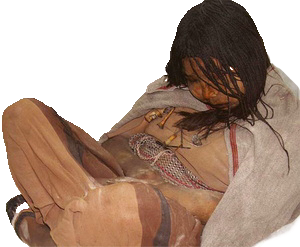
Qhapaq hucha was the Inca practice of human sacrifice, mainly using children. The Incas performed child sacrifices during or after important events, such as the death of the Sapa Inca (emperor) or during a famine. Children were selected as sacrificial victims as they were considered to be the purest of beings. These children were also physically perfect and healthy, because they were the best the people could present to their gods. The victims may be as young as 6 and as old as 15.
Months or even years before the sacrifice pilgrimage, the children were fattened up. Their diets were those of the elite, consisting of maize and animal proteins. They were dressed in fine clothing and jewelry and escorted to Cusco to meet the emperor where a feast was held in their honor. More than 100 precious ornaments were found to be buried with these children in the burial site.
The Incan high priests took the children to high mountaintops for sacrifice. As the journey was extremely long and arduous, especially so for the younger, coca leaves were fed to them to aid them in their breathing so as to allow them to reach the burial site alive. Upon reaching the burial site, the children were given an intoxicating drink to minimize pain, fear, and resistance. They were then killed either by strangulation, a blow to the head, or by leaving them to lose consciousness in the extreme cold and die of exposure.
Early colonial Spanish missionaries wrote about this practice but only recently have archaeologists such as Johan Reinhard begun to find the bodies of these victims on Andean mountaintops, naturally mummified due to the freezing temperatures and dry windy mountain air.
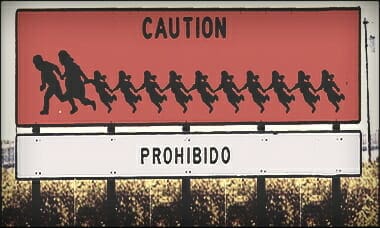
4 Groups that Benefit from Illegal Immigration | Victor Davis Hanson
Victor Davis Hanson is an American classicist, military historian, columnist, and farmer. He has been a commentator on modern and ancient warfare and contemporary politics for National Review, The Washington Times and other media outlets. He is a professor emeritus of classics at California State University, Fresno, and is currently the Martin and Illie Anderson Senior Fellow in classics and military history at Stanford University’s Hoover Institution. In this clip, he talks about the beneficiaries of illegal immigration in the U.S. Full talk, from Oct, 2017.

California Goes Confederate – Victor Davis Hanson
John and Ken interview Victor Davis Hanson about his recent article, “California Goes Confederate.” A great interview and a wonderful article.

Are Democrats Turning Into A Municipal Party?
SAME-OL-SAME-OL. Pelosi was reelected as leader, serious consideration for Keith Ellison DNC Chair (a racist/segregationist and cult member – see also: “Louis Farrakhan’s First Congressman” and “The Ellison Elision.”), and the “head-bobbing – womansplaining” Pocahontas speaking down to all Americans (she is the 2020 choice so far of the Bernie people). We will win more ground in 2020 at this rate… IF, “the Donald” doesn’t effe it up.
— Must Listen to the Previous Panel Discussion —
A trifecta is when a Party controls both state houses AND the governorship. Here is the post-2016 map to show states that have this:
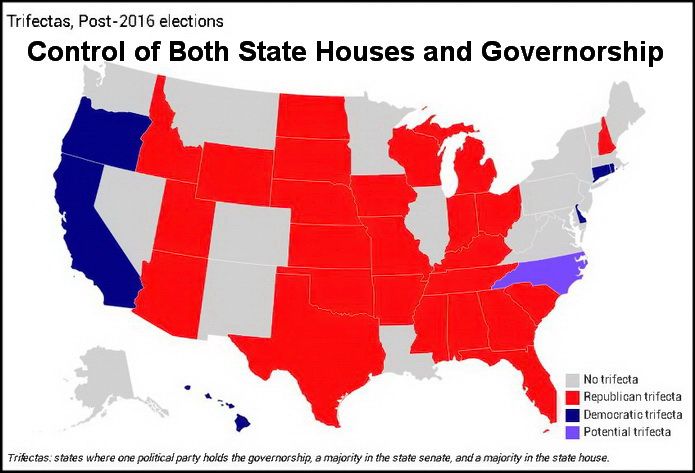
I think this is a good indicator that the general public is rejecting the PC, gender-politics and tendency to label every thing as sexist, intolerant, xenophobic, homophobic, Islamophobic, racist, bigoted (S.I.X.H.I.R.B.). Hillary even saying all white people are essentially racist, supporting anti-Semitic groups like Black Lives Matter, allowing men into women’s bathrooms with parents daughters, etc.
And so each election season something is happening across our nation:
Pre-2016 Trifecta |
Pre-2014 Trifecta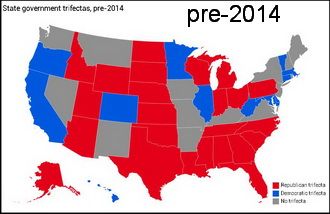 |
Pre-2012 Trifecta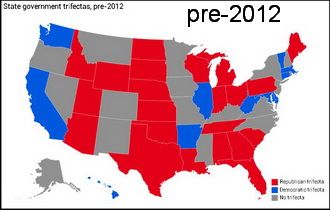 |
Pre-2010 Trifecta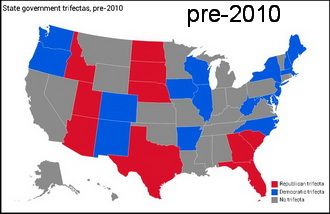 |
I love these maps. It was something I was made aware of (trifectas) by Michael Medved and his statistician historical mind back in 2010. But I haven’t really kept up on it… till this Victor Davis Hanson article, from which I include an extended excerpt:
…In contrast, the Democratic Party is torn and rent. Barack Obama entered office in 2009 with both houses of Congress, two likely Supreme Court picks, and the good will of the nation. By 2010 he had lost the House; by 2012, the Senate. And by 2016, Obama had ensured that his would-be successor could not win by running on his platform.
A failed health care law, non-existent economic growth, serial zero interest rates, near record labor non-participation rates, $20 trillion in national debt, a Middle East in ruins, failed reset and redlines, and the Iran deal were albatrosses around Democratic Party’s neck. Obama divided the country with the apology tour, the Cairo Speech, the beer summit, the rhetoric of disparagement (“you didn’t build that,” “punish our enemies,” etc.), the encouragement of the Black Lives Matter movement, and a series of anti-Constitutional executive orders.
In other words, even as Obama left the Democrats with ideological and political detritus, he also had established an electoral calculus built on his own transformative identity that neither had coattails nor was transferrable to other candidates. Indeed, his hard-left positions on redistribution, social issues, sanctuary cities, amnesty, foreign policy, and spending would likely doom candidates other than himself who embraced them.
The Bernie Sanders candidacy was the natural response, on the left, to Obama’s ideological presidency. But the cranky socialist septuagenarian mesmerized primary voters on platitudes that would have proven disastrous in a general election—before meekly whining about Clinton sabotage and then endorsing the ticket. What then has the Democratic Party become other than a hard left and elite progressive force, which without Obama’s personal appeal to bloc-voting minorities, resonates with only about 40 percent of the country?
The Democratic Party is now neither a centrist nor a coalition party. Instead, it finds itself at a dead-end: had Hillary Clinton emulated her husband’s pragmatic politics of the 1990s, she would have never won the nomination—even though she would have had a far better chance of winning the general election.
Wikileaks reminded us that the party is run by rich, snobbish, and often ethically bankrupt grandees. In John Podesta’s world, it’s normal and acceptable for Democratic apparatchiks to talk about their stock portfolios and name-drop the Hamptons, while making cruel asides about “needy” Latinos, medieval Catholics, and African-Americans with silly names—who are nonetheless expected to keep them in power. Such paradoxes are not sustainable. Nor is the liberal nexus of colluding journalists, compromised lobbyists, narcissistic Silicon Valley entrepreneurs, family dynasties, and Clintonian get-rich ethics.
The old blue-collar middle class was bewildered by the leftwing social agenda in which gay marriage, women in combat units, and transgendered restrooms went from possible to mandatory party positions in an eye blink. In a party in which “white privilege” was pro forma disparagement, those who were both white and without it grew furious that the elites with such privilege massaged the allegation to provide cover for their own entitlement.
In the aftermath of defeat, where goes the Democratic Party?
It is now a municipal party. It has no real power over the federal government or state houses….
Here is the map of Republican Governors:
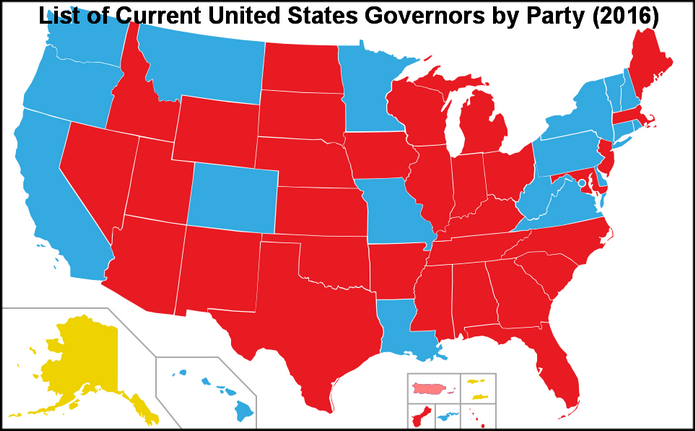
As the liberal agenda becomes more brash and evident, I am seeing a slow change in demographics. Which is great in many respects.

Victor Davis Hanson’s Article the Day Before Voting

Here is an excerpt of Victor Davis Hanson’s NATIONAL REVIEW article:
…For all the talk of buffoonery versus criminality, the divide, at least in November 2016, is over issues and ostensibly could not be clearer for both conservatives and liberals. On the Supreme Court, Obamacare, the debt, rebuilding the military, the Second Amendment, school choice, abortion, reforming the tax code, reexamining regulation, energy exploration and production, illegal immigration, sanctuary cities, and a host of other issues, the Republican ticket is the antithesis of Clinton/Kaine — and is recognized as such by nearly all progressives. Unlike the Democratic prospect, the conservative message oddly still has the chance of being empowered by both Houses of Congress and eventually a Supreme Court.
WikiLeaks, the DNC revelations, the FBI investigations, the Podesta trove, etc., all remind voters in this lowball campaign that Clinton is not a more moral and ethical candidate than Trump, whatever his flaws and shortcomings. And the world we glimpse in John Podesta e-mails is an accurate reflection of the values and interests that created and enriched the Clintons and that would continue their insidious influence in a second Clinton presidency. Remember that the Clinton remorse, such as it is, is not over graft and sabotage of the law and high office but merely over having their habitual corruption exposed. The weird case of Anthony Weiner’s e-mails completed the Clinton circle from immorality to farce, as hubris earned Nemesis — who, remember, always arrives late and in strange incarnations.
It is said that the election poses risks. In fact, in the sense of uncertainty, it does not, at least in the case of Hillary Clinton: There is no mystery at all. Her long record, campaign, published platform, and solidarity with Barack Obama would ensure a twelve-year era of continuing left-wing court appointees, as well as a likely single-payer rescue for the failed Obamacare, more debt incurred for entitlements, a shrinking and more politicized military, more efforts to prune the Second Amendment, no to school choice, expansion of abortion opportunities, more hidden higher taxes on the middle classes and more overt higher taxes on the upper-middle classes, more regulations on small business, more tribal divisiveness, open borders, sanctuary cities and amnesties, crony-green capitalism, and a continued war on fossil fuels. And, of course, there will be endless investigations, more ruined lives of obsequious subordinates, more attacks on prosecutors and the FBI, plea bargains, and scandals as leaks just keep leaking — and always more white lies like her recent false assertion that James Comey wrote his reinvestigation letter only to Republicans.
Clinton’s only remaining advantage is Democratic unity in comparison with the minority party’s fragmentation. Strangely, the supposedly idealist Bernie Sanders, who is the victim of deliberate Clinton-inspired sabotage and subterfuge, in a way that was not paralleled during the Republican primaries, has no compunction about rallying his base to support Hillary. In contrast, Trump’s uncouthness has turned off his rivals and their supporters, who still in large part insist that they will not support him despite the transparency of the primaries and the long-ago oath of fealty of the Republican candidates to the eventual nominee….
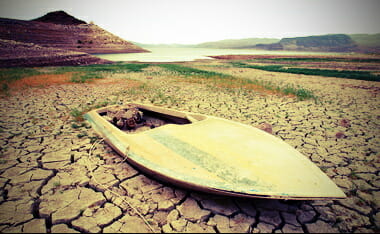
Political Droughts (California)
WHY THIS POST? I am combining three posts into one for the person who wants to link the issue to a friend or family member in one post. Mind you this will make the post a bit long, but show clearly that the reason we are in a drought is because of the left in California kneeling before the alter of the [extreme] environmentalist political pressure groups. NOT to mention Jerry brown helped such people his first tenure (as well as other Democrat governors in California) in office to stop MULTIPLE water projects that would help prepare California for it’s droughts.
Please-please keep in mind that if you are one of the political skeptics that has a belief that greedy politicians are out to bankroll their time in office… think about this: would it behoove the State of California (primarily Democrat politicians) to fix the issue… or keep having eco-“type”-groups campaigning for and giving money to the Democrats Party in California AS WELL AS racking in tons of money via fines to a problem THEY created?
I mean, they have to pay for all the social programs in order to keep the their voters happy and voting Dem: California has 11% of the U.S. population, and about 30% of the welfare cases.
Prof. DiLorenzo
Droughts, of course, are a natural phenomenon, but governments often make them worse when government bureaucrats set water prices and allocate water usage. In 2015, California Governor Jerry Brown ordered city and county governments to enforce a reduction in water usage by 25 percent. Failure to do so would result in a $10,000 per day fine. This comes from a state that during the concurrent drought pumped several million acre feet of fresh water into the ocean in pursuit of government-mandated environmental goals.
Thomas J. DiLorenzo, The Problem with Socialism (New Jersey, NJ: Regnery, 2016), 47.
WATER PULSING
My Fox LA op-ed:
…On March 24th of this year, pursuant to the Endangered Species Act, the federal Government ordered a release of 5 billion gallons of water sent down the Stanislaus River, which eventually emptied into the ocean.
The purpose of this release or “pulse” as it’s called, was to raise the level of the river, so 23 steelhead trout could spawn.
So, in effect, just to allow 23 adult fish to possibly mate, water was wasted that could have supplied 150,000 Californians — for a year.
On April 10th, the Feds sent another 5 billion gallon pulse of water (enough water for another 150,000 Californians) down the Stanislaus, for the purpose of helping six steelhead trout reach the ocean and eventually return upriver to spawn.
It all just seems unbelievable.
In this terrible drought situation California finds itself in, it seems incredible to waste this massive amount of precious water.
It deifies common sense.
Billions of gallons of water being flushed to the sea.
This unfortunately is not the only example….
It’s hard to ask Californians to save water – when government is wasting it so needlessly.
200-YEAR LONG DROUGHTS
Don’t forget: drought, fires, and wild weather were blamed on global cooling.
THANKFULLY we got out of global cooling so we don’t have to worry about droughts, fires, or wild weather any longer ~ WHEW! That was a close call.
(Real Science, also see, RPT)
Here are excerpts from Kotkin’s article that Prager is reading from in the above audio (video):
The Big Idea: California Is So Over: California’s drought and how it’s handled show just what kind of place the Golden State is becoming: feudal, super-affluent and with an impoverished interior.
….But since the 1970s, California’s water system has become the prisoner of politics and posturing. The great aqueducts connecting the population centers with the great Sierra snowpack are all products of an earlier era—the Los Angeles aqueduct (1913), Hetch-Hetchy (1923), the Central Valley Project (1937), and the California Aqueduct (1974). The primary opposition to expansion has been the green left, which rejects water storage projects as irrelevant.
Yet at the same time greens and their allies in academia and the mainstream pressare those most likely to see the current drought as part of a climate change-induced reduction in snowpack. That many scientists disagree with this assessment is almost beside the point. Whether climate change will make things better or worse is certainly an important concern, but California was going to have problems meeting its water needs under any circumstances.
It’s not like we haven’t been around this particular block before. In the 1860s, a severe drought all but destroyed LA’s once-flourishing cattle industry. This drought was followed by torrential rains that caused their own havoc. The state has suffered three major droughts since I have lived here—in the mid ’70s, the mid ’80s and again today—but long ago (even before I got there) some real whoppers occurred, including dry periods that lasted upwards of 200 years.
[….]
But ultimately the responsibility for California’s future lies with our political leadership, who need to develop the kind of typically bold approaches past generations have embraced. One step would be building new storage capacity, which Governor Jerry Brown, after opposing it for years, has begun to admit is necessary. Desalinization, widely used in the even more arid Middle East, notably Israel, has been blocked by environmental interests but could tap a virtually unlimited supply of the wet stuff, and lies close to the state’s most densely populated areas. Essentially the state could build enough desalinization facilities, and the energy plants to run them, for less money than Brown wants to spend on his high-speed choo-choo to nowhere. This piece of infrastructure is so irrelevant to the state’s needs that even many progressives, such as Mother Jones’ KevinDrum, consider it a “ridiculous” waste of money.
[….]
This fundamentally hypocritical regime remains in place because it works—for the powerful and well-placed. Less understandable is why many Hispanic politicians, such as Assembly Speaker Kevin de Leon, also prioritize “climate change” as his leading issue, without thinking much about how these policies might worsen the massive poverty in his de-industrializing L.A. district—until you realize that de Leon is bankrolled by Tom Steyer and others from the green uberclass.
So, in the end, we are producing a California that is the polar opposite of Pat Brown’s creation. True, it has some virtues: greener, cleaner, and more “progressive” on social issues. But it’s also becoming increasingly feudal, defined by a super-affluent coastal class and an increasingly impoverished interior. As water prices rise, and farms and lawns are abandoned, there’s little thought about how to create a better future for the bulk of Californians. Like medieval peasants, millions of Californians have been force to submit to the theology of our elected high priest and his acolytes, leaving behind any aspirations that the Golden State can work for them too.
(CBS) …The Sorek plant produces more than 165 million gallons of fresh water and accounts for more than 20 percent of Israel’s water consumption, according to Udi Tirosh, a director at IDE.
Factoring in several other desalination plants, an astonishing 50 percent of the country’s drinking water now comes directly from the ocean – an amount capable of supplying the entire city of Los Angeles.
Plant officials also say it offers some of the world’s cheapest desalinated water because of new technology and a series of engineering improvements that have cut down the massive energy normally required to transform seawater into fresh water.
Fountains that were once forced to dry up now are flowing again….
CALIFORNIA WATER PROJECTS
Another MUST READ excerpt by a really well written article is this one by Victor Davis Hanson:
Just as California’s freeways were designed to grow to meet increased traffic, the state’s vast water projects were engineered to expand with the population. Many assumed that the state would finish planned additions to the California State Water Project and its ancillaries. But in the 1960s and early 1970s, no one anticipated that the then-nascent environmental movement would one day go to court to stop most new dam construction, including the 14,000-acre Sites Reservoir on the Sacramento River near Maxwell; the Los Banos Grandes facility, along a section of the California Aqueduct in Merced County; and the Temperance Flat Reservoir, above Millerton Lake north of Fresno. Had the gigantic Klamath River diversion project not likewise been canceled in the 1970s, the resulting Aw Paw reservoir would have been the state’s largest man-made reservoir. At two-thirds the size of Lake Mead, it might have stored 15 million acre-feet of water, enough to supply San Francisco for 30 years. California’s water-storage capacity would be nearly double what it is today had these plans come to fruition. It was just as difficult to imagine that environmentalists would try to divert contracted irrigation and municipal water from already-established reservoirs. Yet they did just that, and subsequently moved to freeze California’s water-storage resources at 1970s capacities.
All the while, the Green activists remained blissfully unconcerned about the vast immigration into California from Latin America and Mexico that would help double the state’s population in just four decades, to 40 million. Had population growth remained static, perhaps California could have lived with partially finished water projects. The state might also have been able to restore the flow of scenic rivers from the mountains to the sea, maintained a robust agribusiness sector, and even survived a four-or-five-year drought. But if California continues to block new construction of the State Water Project as well as additions to local and federal water-storage infrastructure, officials must halve California’s population, or shut down the 5 million acres of irrigated crops on the Central Valley’s west side, or cut back municipal water usage in a way never before done in the United States.
Victor Davis Hanson, “The Scorching of California: How Green Extremists Made a Bad Drought Worse,” The City Journal, Winter 2015 (Vol 25, No. 1), 82.
DECADES OF WARNING
A great article by Hot Air. This is the end of it… to read the entire thing, click through.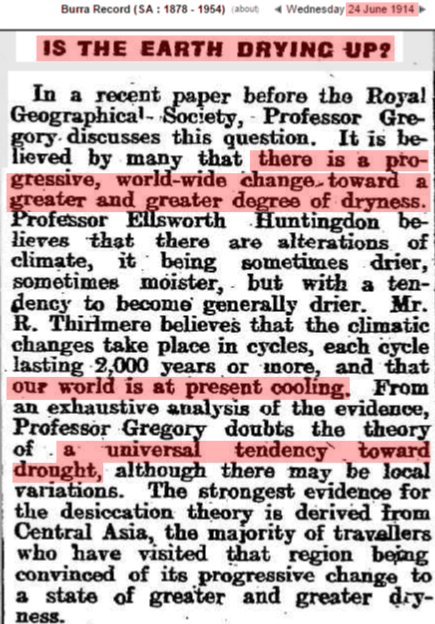
…Southern California has been in the process of running out of water for decades (if not longer) and the current drought is simply amplifying the effects and hastening the decline. I’ve been reading dire (and accurate) predictions about this issue for decades. Nearly twenty years ago there were cautionary tales coming out which discussed the fact that the region was essentially a desert when settlers began moving in and even the relatively small population in the nation’s early history already dwarfed the available natural water supplies. (This is from 1998, long before the current drought cycle.)
Not that we aren’t preoccupied with the issue of future water supplies for a good reason. In the LA Basin alone, we have approximately 6% of California’s habitable land but only .06% of the State’s stream flow — yet we hold over 45% of the State’s population. And if the population projections are to be believed, the entire southland is “scheduled” to grow from our current 16 million to over 24 million people. When policy questions are asked about whether Southern California can support this level of growth, the issue of greatest concern is not traffic or air quality or even quality of life, it is water. And the predominant question asked is “where will this water come from?”
Our water fears are not new. Since the pueblo days of Los Angeles, the lack of local water resources has been seen as the primary problem for the southland’s economic future. All plans for the development of the region have hinged around schemes to secure new water supplies — a fact recognized by Carey McWilliams, the pre-eminent historian of the southland, who wrote in 1946 that “God never intended Southern California to be anything but desert…Man has made it what it is.”
Going back to earlier in the last century, we find that the original reason that Hollywood voted to join the municipality of Los Angeles in 1910 was to gain access to their water rights. The area was already being drained by the growing population and would require later river diversions to feed the thirst of the area. The addition of a drought is a much harsher blow for an artificially created habitable zone.
But is the drought situation something new? Actually, not only the western portion of North America, but central and South America have apparently been experiencing these same cycles for as long as human beings have been around. One of the earliest recorded, but most massive examples was the curious disappearance of the million plus strong civilization of the Mayans more than a thousand years ago. What happened to them? Yep… a series of crippling, decade long droughts.
Identifying annual titanium levels, which reflect the amount of rainfall each year, the Swiss and U.S. researchers found that the pristine sediment layers in the basin formed distinct bands that correspond to dry and wet seasons. According to the scientists, there were three large droughts occurring between 810 and 910 A.D., each lasting less than a decade.
The timing of the droughts matched periodic downturns in the Maya culture, as demonstrated by abandonment of cities or diminished stone carving and building activity.
Experts say the Maya were particularly susceptible to long droughts because about 95 percent of their population centers depended solely on lakes, ponds, and rivers containing on average an 18-month supply of water for drinking and agriculture.
And according to the lake bed core samples they’ve taken, the drought which took out the Mayans wasn’t a one time event.
Scientists have found that the recurrence of the drought was remarkably cyclical, occurring every 208 years. That interval is almost identical to a known cycle in which the sun is at its most intense every 206 years. Nothing suggests the Maya knew anything about the sun’s change in intensity.
See? If only those pesky Mayans hadn’t been burning all of that coal and oil to power their dirty, industrial factories they’d probably still be down there today chopping out the hearts of their enemies. Ah… good times, my friends.
THE RECENT DROUGHT

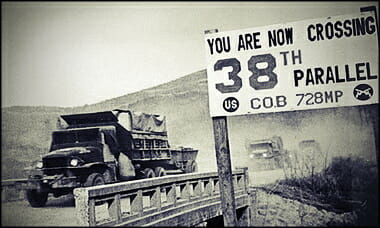
Victor Davis Hanson on “The Forgotten War” (Prager U)
What was the Korean War? And why was America involved in such a faraway conflict? Was the United States’ sacrifice–35,000 killed, over 100,000 wounded–worth it? Historian Victor Davis Hanson, Senior Fellow at the Hoover Institution, shares the fascinating story of a transformative war that many have forgotten.
Here is the interview of Victor Davis Hanson about the above contribution to Prager U:

English Only!? Victor Davis Hanson Explains Why (w/ Mark Isler)
See/Watch: Illegal Immigration Is Illiberal Immigration
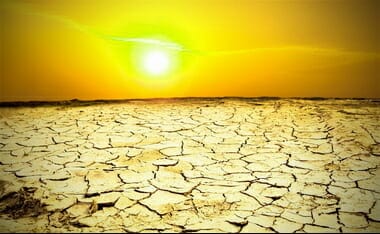
Politicians vs. Science and Planning ~ Weather a Convenient Excuse
Busted: Obama’s claim that global warming caused daughter’s one-time asthma attack
…President Obama claimed today that global warming was to blame for a one-time asthma attack that happened to his daughter Malia when she was in pre-school. Except that, according to Michelle Obama, the attack occurred while they were at the circus — a venue teaming with peanuts.
And wouldn’t you know it, Malia has a peanut allergy.
Blame global warming? That’s nuts!
Changing climate by a fraction of a degree (0.001-degree) could help fix maladies or illnesses such as asthma. That will work JUST AS MUCH as going to a Benny Hinn healing convention.
Gay Patriot brought my attention to something Victor Davis Hanson has written on as of late, and that is, the Left’s proclivity to create problems it later complains about and writes legislation for.
California is a deep blue, one-party state where even the last “Republican” governor signed on to the Democrats’ reckless spending, Amnesty, and environmental extremism. The drought that is ravaging California has nothing to do with Global Warming, it’s just normal cyclical weather. It has everything to do with environmental extremism and a political class that will spend $100Billion on a Train-to-Nowhere, but can’t find the money to develop a sustainable water infrastructure.
But the biggest problem in California is that the government has refused to build the reservoirs and dams necessary to actually save water when the rain does come. As the Wall Street Journal points out, Israel has weathered droughts for years. So has Arizona. Both built infrastructure. California has not, largely because politicians like Jerry Brown stopped such construction decades ago. The Wall Street Journal points out:
Money is not the obstacle. Since 2000 voters have approved five bonds authorizing $22 billion in spending for water improvements… desalination projects have been abandoned…
Because no sooner is an infrastructure project proposed than the Sierra Club and a hundred other Environmentalist Denominations file lawsuits demanding it be stopped. Environmentalists have actually put a measure on the ballot to dismantle existing water reservoirs. Environmentalism is a fundamentalist, extremist religion that says nothing should ever be built anywhere if it could potentially annoy wildlife….
GP is right, it is a religion, and you can see a well-respected, renown in fact, physicist say it is religious.
Here is a money quote from an article by Hanson in the City Journal:
Just as California’s freeways were designed to grow to meet increased traffic, the state’s vast water projects were engineered to expand with the population. Many assumed that the state would finish planned additions to the California State Water Project and its ancillaries. But in the 1960s and early 1970s, no one anticipated that the then-nascent environmental movement would one day go to court to stop most new dam construction, including the 14,000-acre Sites Reservoir on the Sacramento River near Maxwell; the Los Banos Grandes facility, along a section of the California Aqueduct in Merced County; and the Temperance Flat Reservoir, above Millerton Lake north of Fresno. Had the gigantic Klamath River diversion project not likewise been canceled in the 1970s, the resulting Aw Paw reservoir would have been the state’s largest man-made reservoir. At two-thirds the size of Lake Mead, it might have stored 15 million acre-feet of water, enough to supply San Francisco for 30 years. California’s water-storage capacity would be nearly double what it is today had these plans come to fruition. It was just as difficult to imagine that environmentalists would try to divert contracted irrigation and municipal water from already-established reservoirs. Yet they did just that, and subsequently moved to freeze California’s water-storage resources at 1970s capacities.
All the while, the Green activists remained blissfully unconcerned about the vast immigration into California from Latin America and Mexico that would help double the state’s population in just four decades, to 40 million. Had population growth remained static, perhaps California could have lived with partially finished water projects. The state might also have been able to restore the flow of scenic rivers from the mountains to the sea, maintained a robust agribusiness sector, and even survived a four-or-five-year drought. But if California continues to block new construction of the State Water Project as well as additions to local and federal water-storage infrastructure, officials must halve California’s population, or shut down the 5 million acres of irrigated crops on the Central Valley’s west side, or cut back municipal water usage in a way never before done in the United States.
Victor Davis Hanson, “The Scorching of California: How Green Extremists Made a Bad Drought Worse,” The City Journal, Winter 2015 (Vol 25, No. 1), 82.
He also notes in another article illegal immigration as part of the problem… one should be aware that all the states with an illegal immigration problem also are the first to face a water problem:
Population
…Even with drought, cancellations of dams, and diversions of contracted water to the ocean, California might well not have been imperiled by the present drought — had its population stayed at about 20 million when most of the water projects were cancelled in the mid-1970s. Unfortunately the state is now 40 million — and growing. Illegal immigration — half of all undocumented aliens live in California — has added millions to the state population. And agriculture is a key route for Mexican immigrants to reach the middle class. Either the state should insist on closing the borders and encourage emigration out of state to no-tax states (which is already happening at about the rate of 1000 to 2000 people per week), or it should build the infrastructure and create the job opportunities to accommodate newcomers in a semi-arid landscape. That would mean that the vast 4-6 million-acre west side of California’s Central Valley remains irrigated, and that there is continued water made available to a 500-mile dry coastal corridor to accommodate a huge influx of immigrants.
Is it liberal or illiberal to ensure that there will be no new water for a vast new San Jose south of San Jose, or that there will prohibitions on immigration and population growth that would halt a new San Jose?…
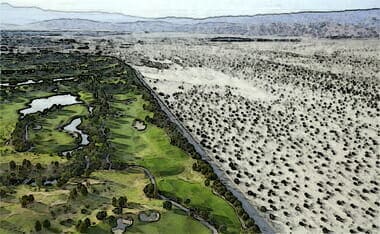
Victor Davis Hanson on the California Drought ~ City Journal
Just as California’s freeways were designed to grow to meet increased traffic, the state’s vast water projects were engineered to expand with the population. Many assumed that the state would finish planned additions to the California State Water Project and its ancillaries. But in the 1960s and early 1970s, no one anticipated that the then-nascent environmental movement would one day go to court to stop most new dam construction, including the 14,000-acre Sites Reservoir on the Sacramento River near Maxwell; the Los Banos Grandes facility, along a section of the California Aqueduct in Merced County; and the Temperance Flat Reservoir, above Millerton Lake north of Fresno. Had the gigantic Klamath River diversion project not likewise been canceled in the 1970s, the resulting Aw Paw reservoir would have been the state’s largest man-made reservoir. At two-thirds the size of Lake Mead, it might have stored 15 million acre-feet of water, enough to supply San Francisco for 30 years. California’s water-storage capacity would be nearly double what it is today had these plans come to fruition. It was just as difficult to imagine that environmentalists would try to divert contracted irrigation and municipal water from already-established reservoirs. Yet they did just that, and subsequently moved to freeze California’s water-storage resources at 1970s capacities.
All the while, the Green activists remained blissfully unconcerned about the vast immigration into California from Latin America and Mexico that would help double the state’s population in just four decades, to 40 million. Had population growth remained static, perhaps California could have lived with partially finished water projects. The state might also have been able to restore the flow of scenic rivers from the mountains to the sea, maintained a robust agribusiness sector, and even survived a four-or-five-year drought. But if California continues to block new construction of the State Water Project as well as additions to local and federal water-storage infrastructure, officials must halve California’s population, or shut down the 5 million acres of irrigated crops on the Central Valley’s west side, or cut back municipal water usage in a way never before done in the United States.
Victor Davis Hanson, “The Scorching of California: How Green Extremists Made a Bad Drought Worse,” The City Journal, Winter 2015 (Vol 25, No. 1), 82.
California governor Jerry Brown had little choice but to issue a belated, state-wide mandate to reduce water usage by 25 percent. How such restrictions will affect Californians remains to be seen, given the Golden State’s wide diversity in geography, climate, water supply, and demography.
We do know two things. First, Brown and other Democratic leaders will never concede that their own opposition in the 1970s (when California had about half its present population) to the completion of state and federal water projects, along with their more recent allowance of massive water diversions for fish and river enhancement, left no margin for error in a state now home to 40 million people. Second, the mandated restrictions will bring home another truth as lawns die, pools empty, and boutique gardens shrivel in the coastal corridor from La Jolla to Berkeley: the very idea of a 20-million-person corridor along the narrow, scenic Pacific Ocean and adjoining foothills is just as unnatural as “big” agriculture’s Westside farming. The weather, climate, lifestyle, views, and culture of coastal living may all be spectacular, but the arid Los Angeles and San Francisco Bay-area megalopolises must rely on massive water transfers from the Sierra Nevada, Northern California, or out-of-state sources to support their unnatural ecosystems.
Now that no more reservoir water remains to divert to the Pacific Ocean, the exasperated Left is damning “corporate” agriculture (“Big Ag”) for “wasting” water on things like hundreds of thousands of acres of almonds and non-wine grapes. But the truth is that corporate giants like “Big Apple,” “Big Google,” and “Big Facebook” assume that their multimillion-person landscapes sit atop an aquifer. They don’t—at least, not one large enough to service their growing populations. Our California ancestors understood this; they saw, after the 1906 earthquake, that the dry hills of San Francisco and the adjoining peninsula could never rebuild without grabbing all the water possible from the distant Hetch Hetchy watershed. I have never met a Bay Area environmentalist or Silicon Valley grandee who didn’t drink or shower with water imported from a far distant water project.
The Bay Area remains almost completely reliant on ancient Hetch Hetchy water supplies from the distant Sierra Nevada, given the inability of groundwater pumping to service the Bay Area’s huge industrial and consumer demand for water. But after four years of drought, even Hetch Hetchy’s huge Sierra supplies have only about a year left, at best. Again, the California paradox: those who did the most to cancel water projects and divert reservoir water to pursue their reactionary nineteenth-century dreams of a scenic, depopulated, and fish-friendly environment enjoy lifestyles predicated entirely on the fragile early twentieth-century water projects of the sort they now condemn.
[….]
We’re suffering the ramifications of the “small is beautiful,” “spaceship earth” ideology of our cocooned elites. Californians have adopted the ancient peasant mentality of a limited good, in which various interests must fight it out for the always scarce scraps. Long ago we jettisoned the can-do visions of our agrarian forebears, who knew California far better than we do and trusted nature far less. Now, like good peasants, we are at one another’s throats for the last drops of a finite supply.
(see also: The Scorching of California)
California, where cool coastal fog is perfect for growing standard broccoli, currently produces more than 90 percent of the broccoli grown in the United States. If California were to disappear, what would the American diet be like?
Expensive and grainy. California produces a sizable majority of many American fruits, vegetables, and nuts: 99 percent of artichokes, 99 percent of walnuts, 97 percent of kiwis, 97 percent of plums, 95 percent of celery, 95 percent of garlic, 89 percent of cauliflower, 71 percent of spinach, and 69 percent of carrots (and the list goes on and on). Some of this is due to climate and soil. No other state, or even a combination of states, can match California’s output per acre. Lemon yields in California, for example, are more than 50 percent higher than in Arizona. California spinach yield per acre is 60 percent higher than the national average.
Without California, supply of all these products in the United States and abroad would dip, and in the first few years, a few might be nearly impossible to find. Orchard-based products in particular, such as nuts and some fruits, would take many years to spring back…
(Slate)
Nature
The first California drought, of course, is natural. We are now in the midst of a fourth year of record low levels of snow and rain.
Californians have no idea that their state is a relatively recent construct — only 165 years old, with even less of a pedigree of accurate weather keeping. When Europeans arrived in California in the 15th and 16th centuries, they were struck by how few indigenous peoples lived in what seemed paradise — only to learn that the region was quite dry on the coast and in the interior…
[….]
Hubris
If one studies the literature on the history and agendas of the California State Water Project and the federal Central Valley Project, two observations are clear. One, our ancestors brilliantly understood that Californians always would wish to work and live in the center and south of the state. They accepted that where 75% of the population wished to live, only 25% of the state’s precipitation fell. Two, therefore they designed huge transfer projects from Northern California that was wet and sparsely settled, southward to where the state was dry and populated. They assumed that northerners wanted less water and relief from flooding, and southerners more water and security from drought, and thus their duty was to accommodate both.
Nor were these plans ossified. Indeed, they were envisioned as expanding to meet inevitable population increases. The Temperance Flat, Los Banos Grandes, and Sites reservoirs were planned in wet years as safety deposits, once higher reservoirs emptied. As population grew larger, dams could be raised at Shasta and Oroville. Or huge third-phase reservoirs like the vast Ah Pah project on the Klamath River might ensure the state invulnerability from even 5-6 year droughts.
One can say what one wishes about the long ago cancelled huge Ah Pah project — what would have been the largest manmade reservoir project in California history — but its additional 15 million acre feet of water would be welcomed today. Perhaps such a vast project was mad. Perhaps it was insensitive to local environmental and cultural needs. Perhaps the costs were prohibitive — a fraction of what will be spent on the proposed high-speed rail project. Perhaps big farming would not pay enough of the construction costs. But one cannot say that its 15 million acre feet of water storage would not have been life-giving in a year like this…
[….]
One of the ironies of the current drought is that urbanites who cancelled these projects never made plans either to find more water or to curb population. Take the most progressive environmentalist in Los Angeles and the Bay Area, and the likelihood is that his garden and bath water are the results of an engineering project of the sort he now opposes.
Fantasies
The state and federal water projects were envisioned as many things — flood control, hydroelectric generation, irrigation, and recreation. One agenda was not fish restoration. Perhaps it should have been. But our forefathers never envisioned building dams and reservoirs to store water to ensure year-round fish runs in our rivers — a mechanism to improve on the boom-and-bust cycle of nature, in which 19th century massive spring flooding was naturally followed by August and September low, muddy, or dry valley rivers.
Engineering alone could ensure an unnatural river, where flows could be adjusted all year long, almost every year, by calibrated releases from artificial lakes, ensuring about any sort of river salmon or delta bait fish population one desired. One may prefer catching a salmon near Fresno to having a $70 billion agricultural industry, but these days one cannot have both. Releasing water to the ocean in times of drought was not the intention of either the California State Water Project or the Central Valley Project…
[….]
Population
Even with drought, cancellations of dams, and diversions of contracted water to the ocean, California might well not have been imperiled by the present drought — had its population stayed at about 20 million when most of the water projects were cancelled in the mid-1970s. Unfortunately the state is now 40 million — and growing. Illegal immigration — half of all undocumented aliens live in California — has added millions to the state population. And agriculture is a key route for Mexican immigrants to reach the middle class. Either the state should insist on closing the borders and encourage emigration out of state to no-tax states (which is already happening at about the rate of 1000 to 2000 people per week), or it should build the infrastructure and create the job opportunities to accommodate newcomers in a semi-arid landscape. That would mean that the vast 4-6 million-acre west side of California’s Central Valley remains irrigated, and that there is continued water made available to a 500-mile dry coastal corridor to accommodate a huge influx of immigrants.
Is it liberal or illiberal to ensure that there will be no new water for a vast new San Jose south of San Jose, or that there will prohibitions on immigration and population growth that would halt a new San Jose? Perhaps the liberal position would be for Silicon Valley grandees to relocate to the wet and rainy Klamath River Basin, where it could grow without unnaturally imported water from the Sierra Nevada. In a truly eco-friendly state, Stanford and Berkeley would open new satellite campuses near the Oregon border to match people with water.
[….]
One reality we know does not work: deliberate retardation of infrastructure to discourage consumption and population growth, in the manner of Jerry Brown’s small-is-beautiful campaign of the 1970s. Ossifying the 99 and 101 freeways at 1960s levels did not discourage drivers from using them. It only ensured slower commute times, more fossil fuel emissions, and far more dangerous conditions, as more drivers fought for less driving space.
Not building dams and reservoirs did not mean fewer people would have water or food and thus would not keep coming to California, but only that there would be ever more competition — whether manifested in tapping further the falling aquifer or rationing residential usage — for shrinking supplies.
One theme characterizes California’s attitude about water. Liberal orthodoxy is never consistent. While it may be seen as progressive to champion river and delta restoration or to divert reservoir water for scenic and environmental use, or to discourage more development of agricultural acreage, the results in the real world are hardly liberal….
The Beholden State: Reclaiming California’s Lost Promise
California is at a tipping point. Severe budget deficits, unsustainable pension costs, heavy taxes, cumbersome regulation, struggling cities, and distressed public schools are but a few of the challenges that policymakers must address for the state to remain a beacon of business innovation and economic opportunity. In this video, the cracks in California’s flawed policy plans are displayed and analyzed by a diverse set of experts in the state’s design.
Buy the book on Amazon
- 2 of 3
- « Previous
- 1
- 2
- 3
- Next »
